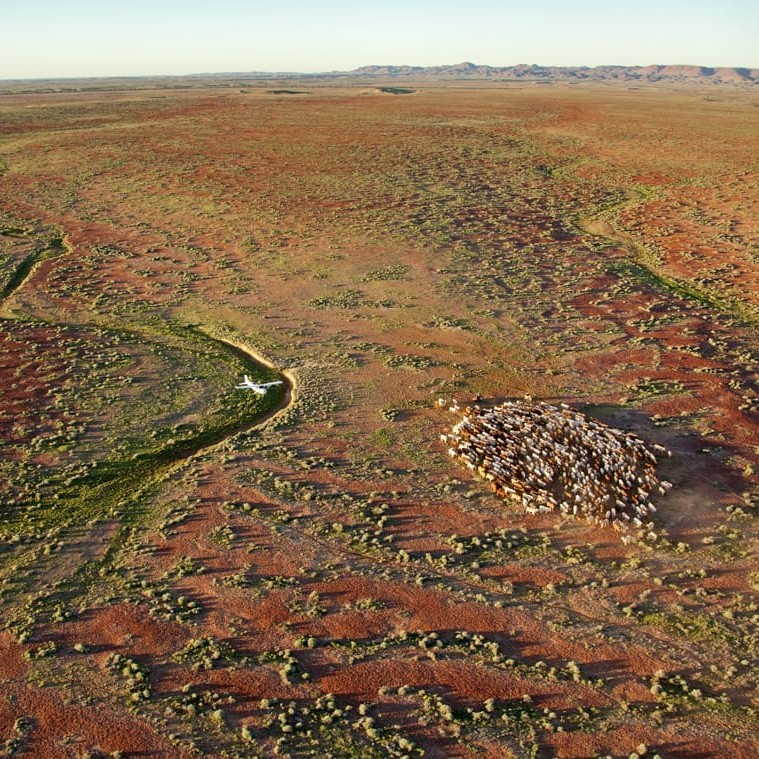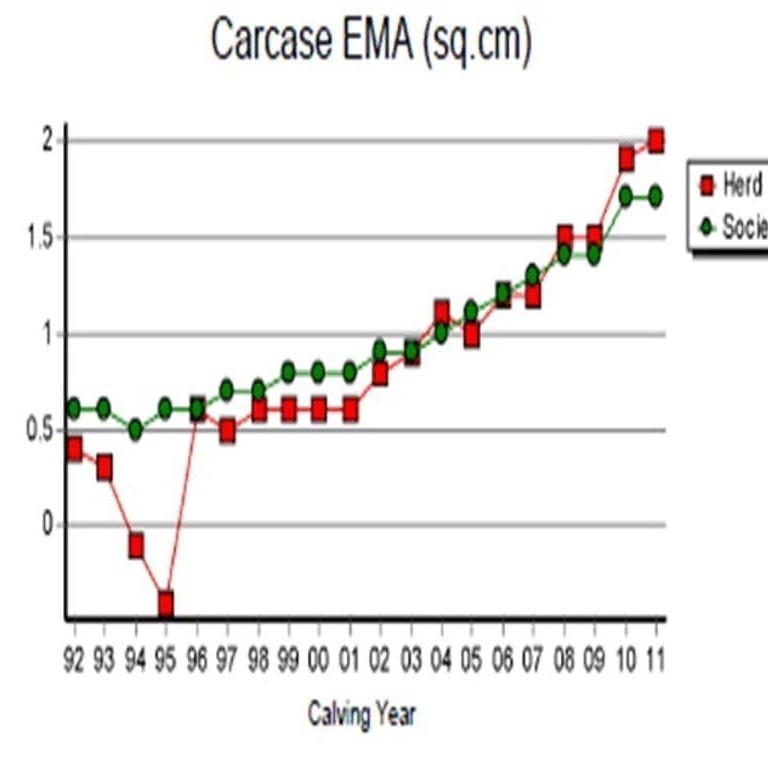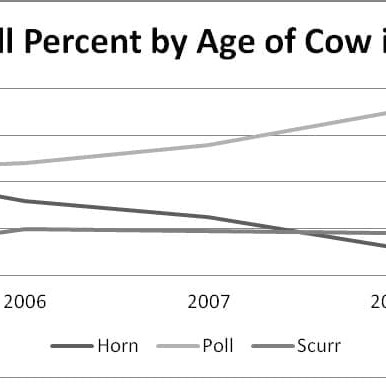 Gains in cattle performance through genetic improvement driven by Breedplan will soon be enhanced via a whole-of-life herd recording system encompassing factors like carcase performance, breeder fertility and growth for extensive beef producer, S. Kidman & Co.
Gains in cattle performance through genetic improvement driven by Breedplan will soon be enhanced via a whole-of-life herd recording system encompassing factors like carcase performance, breeder fertility and growth for extensive beef producer, S. Kidman & Co.
While Breedplan had delivered wide-ranging improvement in herd performance, the company’s livestock marketing manager, Will Abel-Smith said additional technologies would help further improve herd performance.
Mr Abel-Smith addressed the ninth Santa Gertrudis World Congress held in Brisbane during the Ekka recently. His earlier comments can be accessed via Beef Central’s Friday article, ‘Key role for Santas remains, in an evolving Kidman business.’
“We’re at the point in our business now where we have decided that if we can’t measure traits, we can’t improve,” he told the Congress.
In addition to applying selection pressure using Breedplan traits, Kidman has begun performance recording using Gallagher’s TSi crushside data capture units, collecting data on every animal coming through the remote station yards on breed, age, status, weaning rates, calving rates and weightgain, allowing staff to track animals right through their productive life. Meatworks carcase data on steer progeny will be added to the data-set.
“We see it as a way of identifying those animals that aren’t performing for us and making calls on getting rid of them earlier,” Mr Abel-Smith said.
Software is also being written that will allow the company to link that performance assessment right through to carcase level, providing whole-of-cycle performance assessment potential.
While that process will generate a mountain of statistical data, Kidman sees that if appropriately managed and processed, it can help target a ‘lot more’ gains in animal performance, whether it be at the meatworks chiller level, the breeding paddock level, or in the growing paddock.
Mr Abel-Smith said the company started applying more performance-based selection pressure within its Kidman Park seedstock breeding herd from about 2000 onwards, while still maintaining standards for structure and type.
The company’s stud herd contains about 1300 purebred cows, all fully-recorded on Breedplan. The Kidman Park calves comprise about 20pc of all calves recorded on Breedplan each year for the Santa Gertrudis breed.
The calves are weighed, tagged and dam-identified, and later DNA-sire tested, even when run under quite extensive conditions, he said.
Growing emphasis on polls
About 25 percent of the bull-producing herd are bred by AI, and heifers calve at two years. AI sires comprise a mix of breed industry leaders for desirable traits, plus semen collected from the best young bulls coming through Kidman’s own breeding program.
All yearlings are scanned for scrotal size, and carcase traits, and over time, the Kidman calf drop has gone from well below breed average, to well above, for carcase eye muscle area, as seen in the graph on this page. Calves are now above breed average for performance in most traits.
 Last year, the top 400 young Santa bulls sent to work on breeding properties were all in the breed’s top 20 percentile for growth.
Last year, the top 400 young Santa bulls sent to work on breeding properties were all in the breed’s top 20 percentile for growth.
Today the Kidman stud herd is managed on the company’s behalf by the Wrigley family from Moongenilla Angus near Condobolin in NSW. The Wrigleys are successful Angus bull breeders in their own right, and were now applying an ‘Angus-style’ focus on the selection process for Kidman’s Santa program, which since 2006 has produced ‘huge improvements’ in performance, Mr Abel-Smith said.
 Kidman is also working hard to lift the percentage polled across the company’s herd, and there is always great competition each year between station managers over who secures the best polled bulls. The percent polled calves have risen from 40+pc in 2004-05 drop cows to around 70pc in 2009 drop cows, as this graph shows.
Kidman is also working hard to lift the percentage polled across the company’s herd, and there is always great competition each year between station managers over who secures the best polled bulls. The percent polled calves have risen from 40+pc in 2004-05 drop cows to around 70pc in 2009 drop cows, as this graph shows.
Workplace health and safety and animal welfare issues, and reduced labour requirement had driven the emphasis on polled cattle, Mr Abel-Smith said.
For the past six years Kidman has minimised the use of bulls showing horn, and had more recently started DNA-testing young bulls and top sires for polled status. Bull calves are rated for horned, polled or scurred status, and homozygous polled animals are identified at about six months of age using tail-hair samples.
The strong selection pressure means about 70 percent of bull calves are now visually polled, however tests indicate that only about 20pc of those are homozygous for the polled gene, meaning there is still some considerable way to go.
While the initial selection pressure was on improving growth rates, which has largely been achieved Kidman found that there were some consequent issues with calf size and calving difficulty. As a result it has worked hard to monitor birth weights within the Kidman Park herd, with a consequent reduction in birthweight, while also succeeding in reducing gestation intervals.
“In particular, birthweight EBVs have helped us identify the best young bulls coming through the system, which has allowed us to mate our heifers without sacrificing growth in their progeny,” Mr Abel-Smith said. “Scrotal size is an indicator of fertility, and we have moved from well below breed average to above average, via measurement and selection pressure,” he said.
Ultrasound scanning has been used to lift rib-eye area and yield, with a consequent reduction in fat cover. The company’s current bull selection places an increased emphasis on rib fat, as evidence suggests this may also be related to fertility.
“The evidence suggests that measurement in our stud nucleus has lifted the returns in our commercial herds – in the first instance through higher genetic potential for growth, and we look forward to seeing what gains can be made from the full herd tracking system now being activated across the business,” Mr Abel-Smith said.
He said it seemed to the company that the beef breeds with the strongest emphasis on performance recording were becoming the most successful, and he urged Santa breeders to remember that they are not just competing for business within their breed, but with all other breeds.
“We would encourage all breeders to push for continuous improvement through objective performance recording,” he said.
Vertical integration not on the radar
Beef Central asked Mr Abel Smith during question-time about Kidman’s business model, based on ‘traditional’ cattle turnoff into grassfed slaughter markets, rather than vertical integration into lotfeeding, processing, brand development and export as pursued by some other large industry stakeholders.
“We continue to look at the potential for going further down the supply chain, particularly as we have a desire to capture more revenue per beast, if possible,” he said.
“But we have sat back and looked at what other companies like North Australian Pastoral Co and Stanbroke have done, and looked at AA Co’s results to try to glean what we can. It seems that there is a lot of turnover and a lot of effort going into making not a lot of money.”
“Until we have some confidence that we can find a clear path in that direction, I don’t know that we will go that way. It seems to us that meat people are meat people, and producers know production, and maybe the two don’t mix so well.”
While Kidman operated its own small 3000-head feedlot in South Australia, this was very much supplementary to the company’s grassfed operations, and was fuelled mostly by bought cattle, he said.
“But it’s tough going, margin wise,” he said. “Grain prices are hurting lotfeeders and producers at the moment, and unfortunately, it is our view that grain prices will stay higher as the world population increases.”
Cattle trading model will continue
Mr Abel-Smith also confirmed that trading cattle would continue to play a strong part of the company’s future, when circumstances allowed.
“When I first joined the company, management was very much of the opinion that Kidman was a breeder, not a trade in cattle. But times change. We are blessed with this wonder Channel Country fattening resource, and when we experience big seasons like this one, we can’t breed enough cattle ourselves to fully utilise it,” he said.
“In the past three years, Kidman has bought about 38,000 steers for growing-out, and without exception, they have all done very well for us.”
“We run detailed spread sheets and modelling, trying to factor-in all the potential issues, and the only estimation is often the end price, but we are always very conservative when we do it. But generally, trading has been a great tool for us, and we will continue to use it, when appropriate.”
